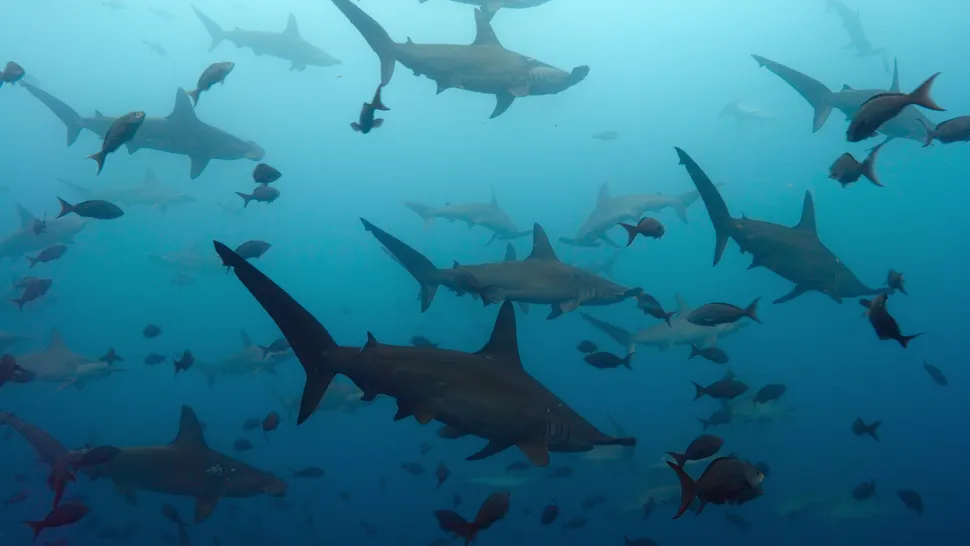Filmmakers have captured stunning footage of hundreds of hammerhead sharks circling a volcanic island off Costa Rica for a new Netflix wildlife series. In a dramatic scene from the third episode of “Our Living World,” a school of hammerhead sharks (Sphyrnidae) is seen gathering around Cocos Island, a remote volcanic island located about 310 miles (500 kilometers) southwest of mainland Costa Rica in the eastern tropical Pacific.
Cocos Island, known as a sanctuary for endangered hammerhead sharks, remains a mystery to scientists who are still trying to understand how and why so many sharks navigate vast ocean distances to converge there annually. “We don’t really know how these sharks are doing this,” Ben Roy, the series producer of “Our Living World,” told Live Science. “We know that they’ve got sensors in their heads and we know that these sensors pick up on the magnetic signature of these cool volcanic rocks.”
The island itself was formed when lava from an ancient underwater volcano solidified and eventually rose 12,000 feet (3,660 meters) above the seabed, creating a unique and magnetically rich environment that attracts these majestic creatures.

For the episode, film crews embarked on an awe-inspiring journey, following a young female hammerhead shark as she departed her coastal nursery and embarked on a remarkable 300-mile (480 km) voyage across the Pacific Ocean to reach the volcanic sanctuary of Cocos Island. Scientists speculate that these sharks gather at this remote oasis to unwind, socialize, and seek potential mates. Remarkably, the female shark navigated effortlessly to Cocos Island, guided by electromagnetic signals emanating from the hardened volcanic rocks on the island’s slopes.
In the captivating footage, the young female joins hundreds of her counterparts as they form a mesmerizing vortex around the island. “At the actual moment when all those hammerheads aggregate and start to swim in those cyclones,” Roy remarked, “we got lucky with some cracking behavior.”
While this gathering is extraordinary, it’s not unprecedented. Scientists previously observed a similar phenomenon in the tropical waters of French Polynesia, where a congregation of hammerhead sharks, albeit comprised solely of females, mystified researchers. This hammerhead shark assembly is just one of the astonishing scenes showcased in the four-part nature series premiering on Netflix. The series delves into the intricate connections that sustain life on Earth, from the unseen fungal networks nourishing forest ecosystems to transatlantic nutrient clouds drifting from Africa to South America, enriching the Amazon.
“The links are what makes this series totally different,” Roy emphasized. “We’ve tried to tell a story that illustrates how individual animal lives and behaviors are intertwined with a much larger narrative.”
In capturing these narratives, the team sought moments that elicited a sense of wonder. “We were really looking for the ‘wow,'” Roy explained. “We are potentially the first generation to fully grasp the connectivity of what’s going on here and potentially the last generation to put that knowledge to good use.”
The footage of the hammerhead shark assembly exceeded all expectations for Roy. “Talking about those ‘wow’ revelations — for me, that was one of them,” he expressed. “Sharks need volcanoes? Who knew!”
